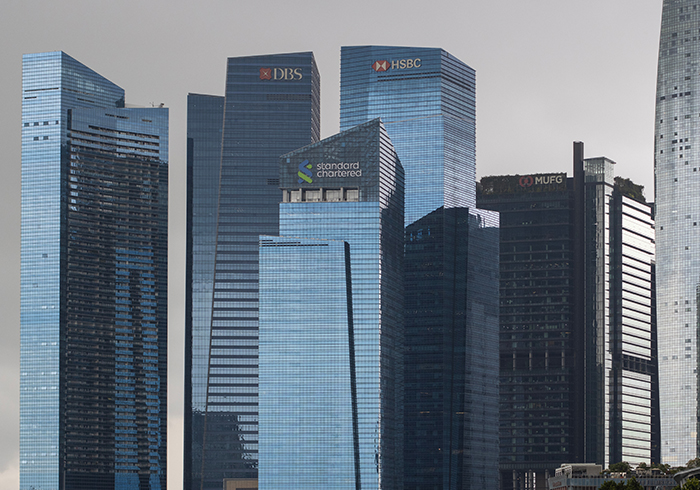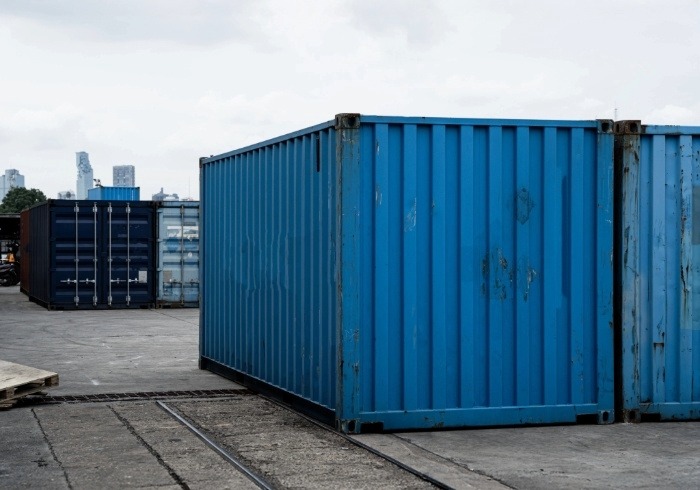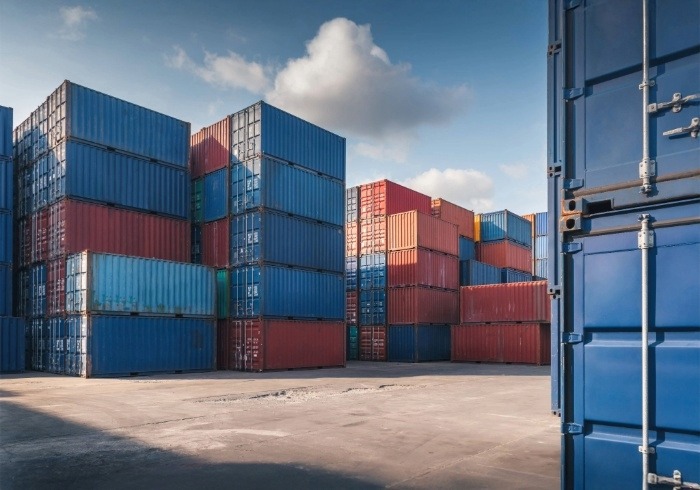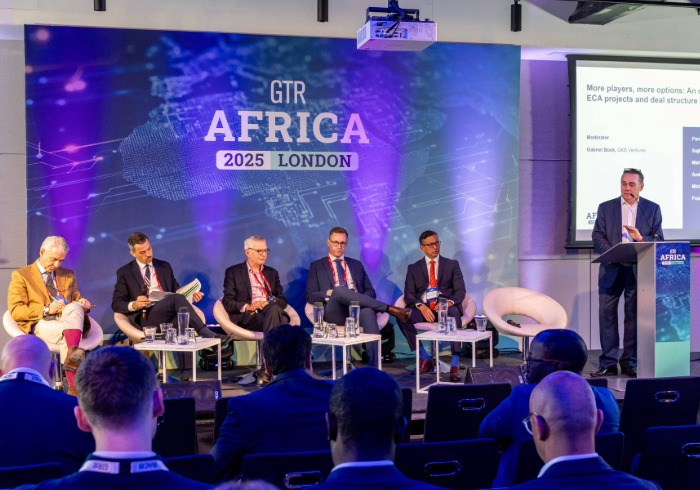The turmoil injected into global trade in the first half of 2025 from US President Donald Trump’s tariff policy does not yet appear to have had a major impact on banks’ trade finance performance, a review of interim results suggests.
The available financial reporting, chiefly from banks in Europe, the Middle East and Singapore, paints an uneven picture of trade finance income and volumes.
Two of the largest global trade lenders – HSBC and Standard Chartered – posted growth over the first half but showed signs of softening in the most recent quarter, while some banks in Hong Kong and Brazil reported sharp fluctuations in certain metrics.
The World Trade Organization earlier this month revised its outlook for global goods trade from a projected 0.2% decline to 1% growth for the year, but said the adjustment is mainly driven by surging US imports as companies seek to avoid the imposition of tariffs.
The US has largely settled tariff discussions with some major trading partners, such as the EU and Japan, but talks with China are ongoing and steep tariff hikes on goods from countries such as India and Switzerland have either been introduced or are set to take effect imminently.
There are wide discrepancies between how banks report trade finance volume or income, if at all, and GTR’s review only covers some lenders and markets.
Most large US, European and Chinese banks, for example, do not break out income from trade-related lending or services, meaning the results only provide a partial snapshot of global trade finance revenue.
Europe
HSBC’s global trade unit generated revenue of US$1.37bn in the first half of 2025, up from US$1.3bn during the same period last year.
Fee and other income earned by the trade division rose 4% year-on-year to US$370mn in Q2, although that figure is around 3% lower than in the previous quarter.
Growth in trade fee income was “driven by guarantees as we supported customers to build out infrastructure and expand production facilities”, chief financial officer Pam Kaur said on an earnings call.
Total trade revenue for the first quarter was US$681mn, suggesting an almost even split between interest and non-interest revenue.
HSBC chief executive Georges Elhedery said on the call that the bank’s trade business was showing “resilience” amid the “uncertainty” generated by steeper US tariffs and tit-for-tat measures from trading partners such as China.
Trade and working capital products at London-headquartered Standard Chartered – whose core markets are in Asia – garnered operating income of US$613mn during the first half of the year, a 3% at constant currency on the same period last year. The bank attributed the growth to higher loan volumes, as well as fee income of US$300mn.
However, most of the uplift came early in the year: second-quarter income of US$298mn was 6% down on Q1 and the lowest quarterly figure since 2020.
Chief executive Bill Winters said the bank is benefiting from political “volatility” as corporate customers reconfigure supply chains and rethink manufacturing strategies.
“With continuing shifts in supply chains, we saw a 17% increase in intra-Asean corridor income,” he said on an earnings call. “This was driven by increased [foreign exchange] and commodity trading, as well as financing solution activities for our corporate clients.”
Other major British banks did not report information on trade income, but Barclays disclosed that documentary credit and short-term trade-related transaction volume had dipped to £1.25bn at the end of June compared to £1.43bn six months earlier.
In Germany, where the manufacturing-heavy economy is highly exposed to a trade war, loan volumes at Deutsche Bank’s corporate banking entity grew 2% year-on-year, on an FX-adjusted basis, to €117bn in Q1, which the bank attributed to growth in trade finance and lending.
Chief executive Christian Sewing told analysts that “the corporate bank sees growth potential, particularly in trade finance solutions for short-term and long-term financings”. But Sewing said the bank is closely following potential credit risks caused by companies with supply chains that are exposed to higher tariffs. Allowances for corporate loan losses rose by 5% in the first half of 2025 to €1.24bn.
Commerzbank eked out a €1mn increase in cash and trade net commission income to €389mn in the first six months of 2025, which it said it achieved “despite [a] sluggish German economy and pressure on export business”.
But the bank struck a downbeat note on Germany’s economic outlook, despite huge investments in the defence sector. “Investment activity and demand have continued to deteriorate noticeably in an economic environment that is already challenging due to persistently high energy costs,” it said, adding that labour shortages and costs and “cumbersome bureaucracy” are adding to the problem.
Spain’s Santander said its trade and working capital solutions helped global transaction banking income rise by 2% year-on-year to €1.34bn in the first half, “despite a challenging business environment”.
The lender said accelerated trade and working capital activity was driven by “an enhanced platform” for confirmations, expansion into new segments, partnerships with funds and asset managers, as well as “good business performances in key markets” such as the US.
Trade and correspondent banking revenue at UniCredit slipped by 9% in the first half to €500mn, despite fees growing by 1%. Almost two-thirds of trade and correspondent banking revenue comes from fees, suggesting the decline was in lending. The bank did not respond to a request for comment.
ING chief financial officer Tanate Phutrakul said record quarterly wholesale banking fee income of €360mn was driven by lending, daily banking and trade finance. The bank reported net core wholesale banking lending growth of €4bn, “as we financed more working capital and increased our short-term trade-related financing”.
Pan-Nordic lender Nordea reported a 12% year-on-year jump in quarterly net fee and commission income from lending and guarantees to €124mn, “mainly driven by higher lending fee income and higher trade finance income”.
Asia Pacific
In Singapore, United Overseas Bank (UOB) posted a year-on-year jump of 6% in trade-related net fee and commission income to S$156mn (US$121.6mn).
Despite an overall drop in UOB’s H1 wholesale banking pre-tax profit and a fall in transaction banking revenue, the lender said trade loans had risen by 12% during the period, “underscoring deeper client engagement through integrated cash, trade and supply chain platforms across key markets”.
But reflecting a softer second quarter seen at some other lenders, gross trade loan volumes slipped by S$2bn at the end of Q2, to S$37bn.
OCBC reported gross fee and commission income from trade and remittances of S$137mn in H1, up 5% on 2024.
At Singapore’s largest bank, DBS, trade income declined by 2% in H1 to S$320mn. The average interest rate on the bank’s S$44bn of trade assets was 5.06%, down almost a full percentage point since the beginning of 2024. In Hong Kong, the lender also reported a 23% year-on-year contraction in trade loan volumes. DBS did not respond to a request for comment.
Elsewhere in Hong Kong, Hang Seng Bank – majority-owned by HSBC – said that “pre-emptive shipping due to the trade tariffs led to a momentary uplift in our trade finance business with balances rising 16% since the end of 2024, reflecting strong support for our trade customers”.
Gross trade finance loans stood at HK$35.5bn (US$4.5bn) at the end of June compared to HK$30.5bn six months earlier. Documentary credits and short-term trade-related transactions also grew. But chairman Edward Cheng warned that “as Hong Kong’s success is partly based on international trade flows”, the impact of US tariffs “cannot be ignored”.
In an annual report covering 2024, Bank of China (Hong Kong) said trade finance loans stood at HK$44.8bn at the end of December 2024, 6% lower than in 2023. Of that, HK$513mn were classified as impaired, a slight uptick on the previous year despite the overall decline in volume.
The lender also disclosed a 42.6% slump in trade bills to HK$2.1bn, while trade-related contingencies shrank to HK$12.6bn from HK$16bn year-on-year.
Bank of East Asia, also reporting annually, posted trade finance fee and commission income of HK$131mn for the year, compared to HK$96mn a year earlier. The bank’s trade bills surged to HK$1.45bn at the end of 2024, from HK$373mn a year earlier.
Australia’s ANZ reported trade and supply chain revenue of A$244mn (US$158.8mn) in the six months to March, comprised of “core trade” and “global guarantees”.
Asked in April about the impact of US tariffs, chief executive Shayne Eliot downplayed the bank’s exposure to global trade upheaval. “Our trade business is… very, very modest and it’s certainly modest within the greater ANZ,” he said. “There is less stuff being financed from China to the US, but that’s a really, really tiny part of our business, so that’s why I was more optimistic about the fact that when there’s change, it will be good for us.”
The big three Japanese banks, Mizuho, MUFG and SMBC, did not disclose trade earnings in their reporting for the financial year ending in March.
United Arab Emirates
Trade loans at large UAE banks continued to grow. Emirates NBD added AED5.2bn (US$1.4bn) worth of loans in the first six months of the year, bringing its total to AED40.2bn, although fee and commission income from trade edged down in Q2 to AED348mn.
First Abu Dhabi Bank’s rapid expansion in trade lending continued, with its portfolio reaching AED70.6bn at the end of June, up from AED46.3bn at the same point in 2024.
At Abu Dhabi Commercial Bank, trade finance fees and commissions rose 13% in the first half of the year to AED387mn.
Americas
Of the largest US banks, only Citi routinely reports income from trade. Its trade and treasury solutions unit – which also houses products such as working capital solutions, liquidity management and supply chain finance – earned US$3.67bn in the second quarter.
Net interest income was 14% higher than the same period last year. Non-interest revenue for trade and treasury, typically earned from fees and commissions, was up 15% compared to the first quarter of 2025.
Chief executive Jane Fraser said on an earnings call that banks onboarded almost 2,000 new suppliers during the quarter. A Citi spokesperson told GTR at the time that “suppliers” refers to businesses that receive payment via Citi for goods and services delivered to the bank’s customers.
Fraser said the bank is “feeling pretty good” about fee income and that it grew new trade client mandates by 24% year-on-year during the quarter, because “corporates have been building up inventory to limit unforeseen disruptions”.
East West Bancorp, the parent company of California’s East Wank Bank, said that a 10% jump in lending and loan services fees in the first half of the year to US$52mn was “primarily due to higher credit enhancement and trade finance fees driven by increased customer activity”.
Banco do Brasil did not report income from export financing, as it had done in previous interim results. However, the value of confirmed letters of credit issued by foreign financial institutions slumped from R$494.1mn (US$91.4mn) as of March to R$188.8mn in June. “Open credits for import” remained largely steady during the same period.
A spokesperson for the lender says that despite the fall in confirmations, the bank “registered positive growth in other key areas of foreign trade financing”, including advances on foreign exchange contracts for exporters, which rose by almost 20% to R$28.8bn in June.
At Bradesco, “foreign trade finance” loans to corporates stood at R$53.1bn in June, down slightly on the previous quarter but up almost 7% compared to the same period in 2024.
Letters of credit for imports roughly halved, falling to R$457.2mn at the end of June, compared to R$897mn at the end of December. A spokesperson for the bank said the drop was attributable to the Brazilian real’s appreciation against the US dollar, and the scheduled maturation of around US$130mn worth of import letters of credit.
“It is important to emphasise that there has been no reduction in credit appetite for this business line,” the spokesperson says. “The fluctuation is technical and temporary, not indicative of any strategic shift or decline in demand.”
This article was updated on September 8, 2025, to include a statement received by Bradesco received after the article was published.









